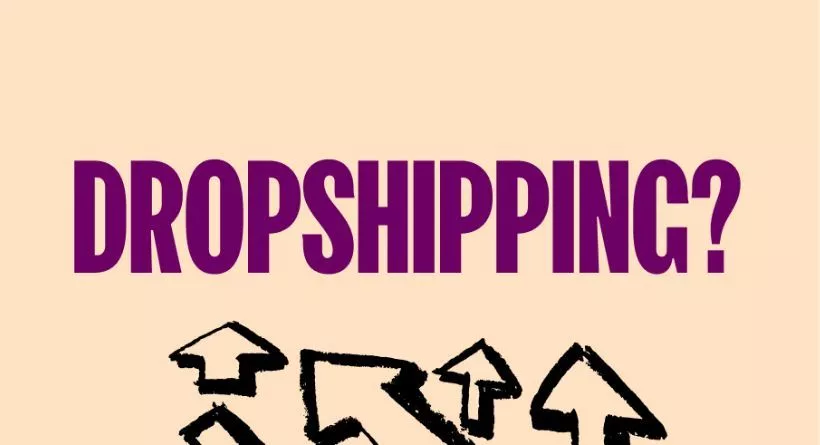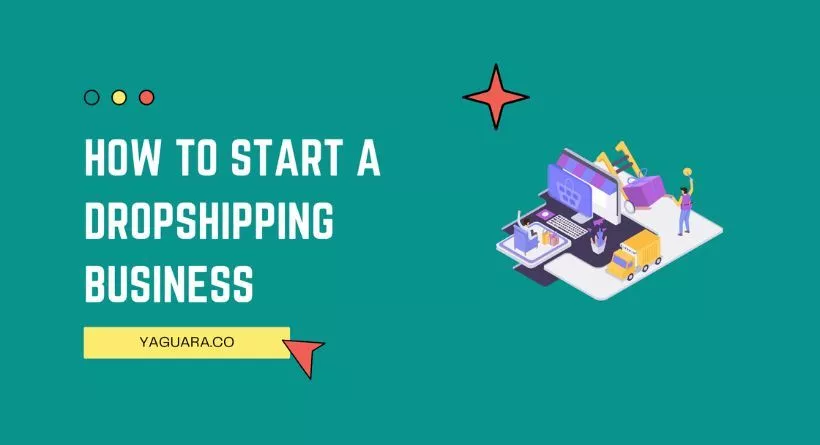Are you struggling with the idea of starting a dropshipping business, but don’t know where to begin? You’re not alone. Many aspiring entrepreneurs face the same challenge, which can be daunting. However, you’ve come to the right place. In this blog post, we’ll take you through a step-by-step guide on how to start a dropshipping business in 2023, making the process as smooth and straightforward as possible. We aim to ease your concerns and help you build a successful online enterprise by providing an overview of the key steps and strategies.
Also Read: 9 Best Banks for Small Businesses in 2023
We understand the pain points and challenges you may encounter while starting your dropshipping business. That’s why we’re committed to addressing them head-on, offering practical solutions and expert advice to ensure your venture thrives in the ever-growing e-commerce landscape. So, let’s dive in and explore the nine simple steps to kickstart your dropshipping journey.
Understanding Dropshipping Business Fundamentals

What is dropshipping?
Dropshipping is a popular e-commerce business model that allows you to sell products without holding any inventory. Instead, you partner with suppliers who handle the storage, packaging, and shipping of products directly to your customers. This means that you can focus on building your brand and marketing your store without the hassle of managing inventory or shipping logistics.
Benefits of dropshipping
Starting a dropshipping business has several advantages, including low startup costs and reduced operational risks. You don’t need to invest heavily in inventory and can easily test the market for various products. Furthermore, the flexibility of the dropshipping model allows you to scale your business quickly, adapting to market trends and consumer preferences with ease.
Common challenges and how to overcome them
Despite the numerous benefits, dropshipping businesses face a few challenges. For example, managing supplier relationships and maintaining quality control can be difficult. To overcome these obstacles, it’s crucial to choose trustworthy suppliers and implement a system for monitoring product quality. Additionally, dropshipping businesses may face increased competition and slim profit margins. To counter this, focus on providing exceptional customer service, creating a strong brand identity, and implementing effective marketing strategies.
Finding a Profitable Niche for Your Dropshipping Business
Importance of choosing the right niche
Selecting the right niche is critical to the success of your dropshipping business. A well-defined niche helps you target a specific audience, making it easier to market your products and differentiate your brand from competitors. Moreover, choosing a niche with high demand and low competition can lead to higher profit margins and faster growth.
Tips for identifying profitable niches
To identify a profitable niche, start by researching market trends and consumer interests. Look for product categories with growing popularity, high search volume, and a passionate target audience. Additionally, consider your interests and expertise, as this can help you make informed decisions about product selection and marketing strategies.
Analyzing competition and demand
After identifying potential niches, it’s crucial to analyze the competition and demand. You can use tools like Google Trends, Keyword Planner, and competitor analysis software to assess market demand and identify key competitors. Opt for a niche with moderate competition, as this indicates room for growth while still providing a level of demand that can sustain your dropshipping business.
Selecting Reliable Dropshipping Suppliers
The Significance of supplier selection
Choosing the right suppliers is a crucial aspect of building a successful dropshipping business. Reliable suppliers ensure timely deliveries, maintain product quality, and contribute to a positive customer experience. Partnering with the wrong suppliers can lead to delays, poor product quality, and dissatisfied customers, which can harm your brand reputation and business growth.
How to find trustworthy suppliers
Start your search for suppliers by browsing online directories and reaching out to manufacturers directly. Look for suppliers with a proven track record of reliability, prompt communication, and consistent product quality. Don’t be afraid to ask for references or samples before committing to a partnership.
Building strong relationships with suppliers
Once you’ve found suitable suppliers, it’s essential to cultivate strong relationships with them. Communicate regularly, provide clear expectations, and address any concerns promptly. By establishing trust and maintaining open lines of communication, you can ensure a long-lasting and mutually beneficial partnership, ultimately contributing to the success of your dropshipping business.
Also Read: Canvas Tcisd login details for you
Creating a Winning E-commerce Store
Choosing the right platform
Selecting the right e-commerce platform is essential for your dropshipping business. It should offer the necessary features to support your operations, such as seamless integration with suppliers, customizable themes, and robust analytics tools. Popular options include Shopify, WooCommerce, and BigCommerce. Evaluate each platform’s pros and cons to determine which one best aligns with your business needs.
Store design and user experience
A well-designed e-commerce store is crucial for attracting customers and encouraging them to make purchases. Focus on creating a visually appealing, easy-to-navigate website that reflects your brand identity. Ensure that your site loads quickly and is mobile-responsive, as this can significantly impact user experience and conversion rates.
Optimizing product listings
Optimized product listings are key to increasing visibility and driving sales in your dropshipping business. Create engaging, keyword-rich titles and descriptions that accurately describe your products. High-quality images and well-organized product categories will also improve the customer’s browsing experience and boost your store’s credibility.
Implementing Effective Marketing Strategies

Importance of digital marketing
Digital marketing plays a vital role in the success of your dropshipping business. It helps you reach your target audience, engage potential customers, and drive traffic to your store. Implementing a comprehensive digital marketing strategy is essential for building brand awareness and increasing sales.
Utilizing social media and content marketing
Social media and content marketing are powerful tools for promoting your dropshipping business. Create and share valuable, relevant content that resonates with your target audience on platforms like Facebook, Instagram, and Pinterest. Engage with your followers, answer their questions, and showcase your products to build a strong online presence.
Search engine optimization (SEO) tips for dropshipping businesses
SEO is essential for improving your store’s visibility on search engines like Google. Optimize your website’s content, structure, and metadata to rank higher in search results. Focus on targeting long-tail keywords relevant to your niche, building high-quality backlinks, and creating a user-friendly website to enhance your dropshipping business’s SEO performance.
Setting Up Efficient Operations and Customer Support
Streamlining order processing
Efficient order processing is crucial for maintaining customer satisfaction and fostering repeat business. Automate your order processing system by integrating your store with your supplier’s inventory, ensuring that orders are fulfilled promptly and accurately. Regularly monitor your suppliers’ performance to maintain operational efficiency.
Handling returns and refunds
Establish clear policies for returns and refunds that protect both your business and your customers. Communicate these policies transparently on your website and during the checkout process. By streamlining your return and refund procedures, you can mitigate customer frustration and enhance your brand’s reputation.
Providing exceptional customer service
Exceptional customer service can set your dropshipping business apart from the competition. Train your support team to respond promptly and empathetically to customer inquiries. Offer multiple support channels, such as email, live chat, and social media, to provide customers with convenient options for reaching out. By prioritizing customer satisfaction, you can build long-lasting relationships and foster brand loyalty.
Monitoring and Analyzing Your Dropshipping Business Performance
Key performance indicators (KPIs) to track
Tracking key performance indicators (KPIs) is essential for measuring the success of your dropshipping business. Some important KPIs to monitor include conversion rates, average order value, customer lifetime value, and return on ad spend. Regularly assessing these metrics will help you make data-driven decisions and improve your strategies.
Leveraging analytics tools
Utilize analytics tools like Google Analytics, Facebook Insights, and e-commerce platform-specific tools to gather valuable insights about your store’s performance. These tools can help you identify trends, assess customer behavior, and optimize your marketing efforts, ultimately contributing to your dropshipping business’s growth.
Adapting and improving your strategies
Continuously analyze your KPIs and leverage the data obtained from analytics tools to refine your strategies. Be prepared to adapt to changing market trends and customer preferences. By regularly reviewing and improving your marketing, product selection, and operations, you can ensure long-term success for your dropshipping business.
Scaling Your Dropshipping Business for Long-term Success
Expanding your product range
As your dropshipping business grows, consider expanding your product range to cater to a broader audience. Research market trends and customer feedback to identify new, in-demand products that align with your niche. Adding complementary products can increase your average order value and boost customer satisfaction.
Also Read: 5 Best Sites to Test your Monitor Refresh Rate
Building a recognizable brand
A strong brand identity sets your dropshipping business apart from competitors and fosters customer loyalty. Invest time and resources in creating a cohesive brand image, including a memorable logo, consistent visual elements, and a unique brand voice. Use your brand identity consistently across your website, social media, and marketing materials.
Exploring new markets and channels
To scale your dropshipping business, explore new markets and sales channels. Consider expanding your reach through international markets or by targeting different demographics. Utilize additional sales channels like Amazon, eBay, or Etsy to increase your brand exposure and drive more sales.
In conclusion, starting and scaling a successful dropshipping business involves mastering several essential steps, from understanding the fundamentals to scaling your business for long-term success. By choosing the right niche, selecting reliable suppliers, creating an attractive e-commerce store, and implementing effective marketing strategies, you’ll set yourself up for success in the world of dropshipping. Stay persistent, adapt to changes, and always be ready to learn and improve. Your dedication and hard work will surely pay off as you embark on this exciting entrepreneurial journey.
FAQs
Q: What is dropshipping?
Q: How do I find a profitable niche for my dropshipping business?
Q: How do I select reliable dropshipping suppliers?
Q: What are some effective marketing strategies for a dropshipping business?
Q: How do I monitor my dropshipping business’s performance?
Q: How can I scale my dropshipping business for long-term success?
Is it easy to start dropshipping?
Market Research: Conducting thorough market research is crucial to identify profitable niches, target audiences, and potential competitors. This can help you make informed decisions when selecting products and suppliers.
Finding Reliable Suppliers: Identifying and partnering with trustworthy suppliers is essential for maintaining product quality and ensuring timely delivery. This can be a time-consuming process, as you’ll need to vet suppliers and establish long-term relationships.
Building an Online Store: Creating a user-friendly and aesthetically pleasing online store is important to attract customers and generate sales. You can use platforms like Shopify, WooCommerce, or BigCommerce to set up your store, but you may need to invest time in learning these platforms or hiring a developer.
Marketing and Customer Acquisition: Generating traffic and converting visitors into customers require consistent marketing efforts. You may need to invest in digital marketing techniques like search engine optimization (SEO), content marketing, email marketing, and social media advertising to attract potential customers.
What product sells best dropshipping?
Electronics and Accessories: Products like headphones, smartphone cases, chargers, and smartwatches have a broad customer base and often sell well in dropshipping.
Health and Beauty: This category includes products such as skincare items, makeup, hair care, and wellness supplements. These products usually have high demand due to the constant desire for personal care and well-being.
Fashion and Apparel: Clothing items and accessories like t-shirts, leggings, and jewelry are popular dropshipping products as they cater to a wide audience with varying tastes and preferences.
Home and Kitchen: Products like home decor, kitchen gadgets, and storage solutions are always in demand as people continually seek to improve their living spaces.
Fitness and Sports Equipment: As health and fitness trends grow, so does the demand for fitness equipment, activewear, and sports accessories.
It’s essential to conduct market research and analyze current trends to identify the best-selling products for your dropshipping business. Additionally, keep in mind that choosing products you’re passionate about and knowledgeable about can make it easier to market and sell them.

